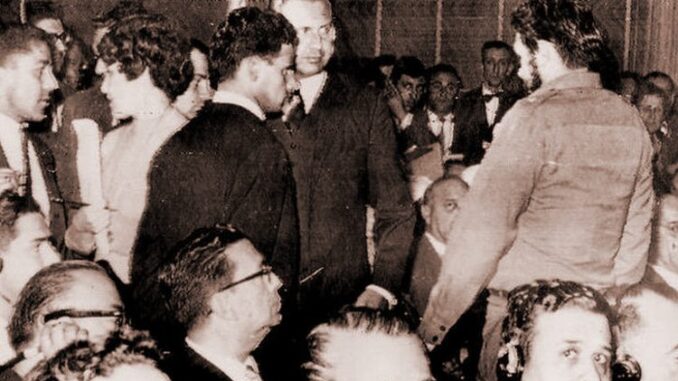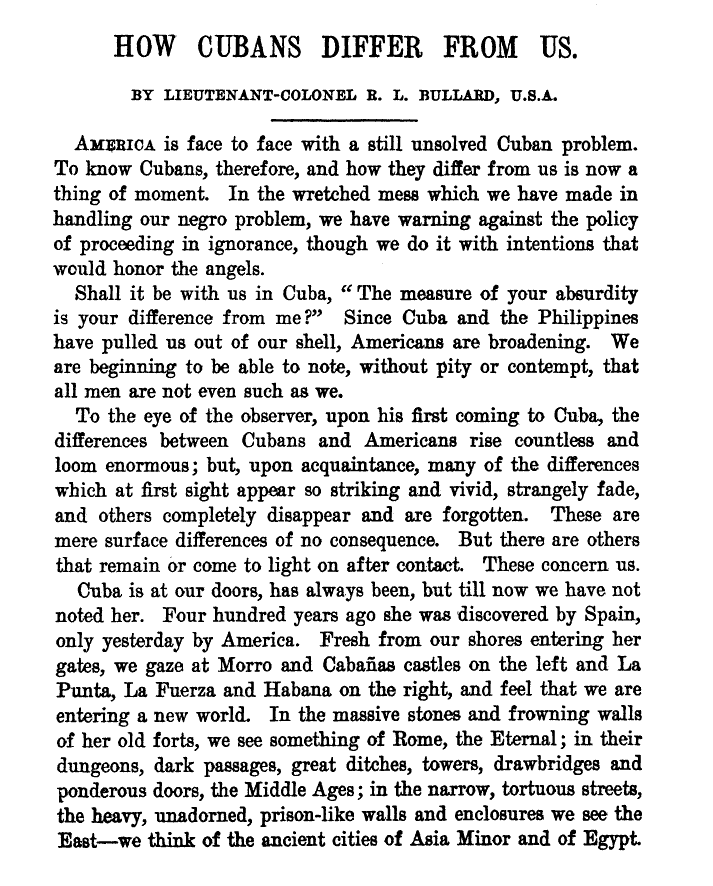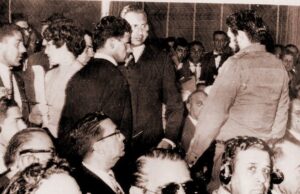
“Cuban blacks look directly into the eyes of whites,” noted an impressed North American visitor in 1907: “For the American in his country, considering black as an equal in social, political, or even labor terms is an affront, an offense, at least; for the Cuban, no. This is because [the black in Cuba] does not suffer confrontation and harshness everywhere (…) nor coldness and resentment on the part of the white (…) Schools, churches, theaters, hotels, beaches, trams, ships, whites and blacks are present in all of them ”.
This is how RL Bullard described the differences between Cubans and Americans, in The North American Review , less than five years before the massacre of the Independent Party of Color. Obviously, the gaze of this lieutenant colonel in the United States Army regarding interracial relations in Cuba was not that of a Cuban who lived on the island, let alone that of an anthropologist or sociologist. Usually, those who come to visit look at things with the glasses they bring. However, even if an idealization of Cuba as a “racial democracy” results, when looking at it with the polarized lenses of the United States, this military officer did not only reflect the remarkable differences between the two sides.


Even today some Americans seem puzzled to discover that, in contrast to the US, where a drop of African or “Latin” ( Hispanic , in the Census jargon) blood disqualifies them as white . In Cuba, who “seems white” automatically is on paper. In fact, you can not even be black or white, but mulatto, for centuries. That mulatto (formerly “brown”), however, does not appear today in official documents but as “mestizo”, a census category that does not exist in the US, but is present in Latin America and the Caribbean.
Naturally, no category or generic term exhausts the representations about skin color and somatic features that really exist in Cuban society, which the anthropologist Jesús Guanche took the trouble to compile in a list of 20 “popular phenotypes” (blue black , Cocotimba, Moorish, Indian, jabao, cartridge color, trigueño, blanconazo, colorao, white border, milky …). 1 Against this, the American categories are rather bland.

Leave a Reply